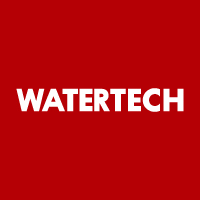April, 2025, by WATERTECH CHINA

China's water purifier industry has emerged as a global powerhouse, driven by technological innovation, competitive pricing, and scalable manufacturing. As water scarcity and pollution intensify worldwide, Chinese manufacturers like Midea, Xiaomi, and Haier are exporting a wide range of products from basic faucet filters to advanced reverse osmosis, RO systems, to meet diverse international demands. However, penetrating global markets requires navigating a complex web of regional regulations, certifications, and consumer preferences. This article examines China's export landscape across key regions and the compliance frameworks shaping trade.
North America: Rigorous Certification and Brand Trust
In the U.S. and Canada, water purifiers must meet stringent safety and performance standards. The NSF/ANSI certifications e.g., NSF 42 for aesthetic effects, NSF 53 for health contaminants, are non-negotiable for market entry. Chinese brands like Ecopure and Angel have invested heavily in obtaining these certifications, often collaborating with U.S.-based labs to validate claims. For instance, Xiaomi's Mi Water Purifier, despite its affordability, underwent rigorous testing to achieve NSF 372 compliance for lead-free materials.
The U.S. market also prioritizes energy efficiency. Products must comply with the Department of Energy, DOE and Environmental Protection Agency, EPA standards, particularly for RO systems. California's Proposition 65, which mandates warnings for chemicals linked to cancer, adds another layer of compliance. Chinese manufacturers address this by integrating real-time contaminant displays and eco-modes to reduce wastewater.
Canada's Health Canada guidelines align closely with U.S. standards but emphasize English French bilingual labeling. Brands like Gree have tailored packaging and apps to meet these requirements, gaining traction in urban centers like Toronto and Vancouver.
Europe: Sustainability and Precision
The European Union enforces some of the world's strictest water quality regulations. The EU Drinking Water Directive mandates that purifiers reduce contaminants like nitrates, pesticides, and microplastics to near-zero levels. Products must also comply with CE marking for health, safety, and environmental protection.
A standout requirement is compliance with the Restriction of Hazardous Substances RoHS Directive, which limits heavy metals in electronics. Chinese companies like Midea and Joyoung use RoHS-compliant components in their EU-bound products. Additionally, the Waste Electrical and Electronic Equipment, WEEE Directive compels manufacturers to fund recycling programs. Haier's "Green Takeback" initiative in Germany exemplifies this, offering free returns for end-of-life units.
Sustainability is a key differentiator. Solar-powered purifiers, such as SunPure's off-grid systems, are gaining popularity in Southern Europe. Meanwhile, Nordic countries favor compact, energy-efficient models that align with their carbon-neutrality goals.
Asia-Pacific: Diverse Standards and Price Sensitivity
In India, the Bureau of Indian Standards, BIS certification IS 10500:2012 governs water purifiers. Products must remove contaminants like arsenic and fluoride, prevalent in groundwater. Chinese manufactured brands like Pureit by Unilever and Kent have localized production to reduce costs, offering sub-$100 RO systems tailored to rural households.
Southeast Asian markets, including Indonesia and Vietnam, prioritize affordability and durability. 3M China and Qinyuan Group dominate with ceramic filters that require minimal maintenance in humid climates. However, certifications like Singapore's PUB approval are essential for premium positioning.
Australia and New Zealand adhere to the WaterMark Certification Scheme, which tests product safety under the Plumbing Code. Chinese exporters like Breton, a Haier subsidiary have adapted by using corrosion-resistant materials suited to coastal climates.
Middle East & Africa: Harsh Conditions and Off-Grid Solutions
The Gulf Cooperation Council, GCC nations demand purifiers that handle high-TDS total dissolved solids levels in desalinated water. Stainless steel RO membranes from Bluetech Robotics and Vontron are widely used, with compliance to GSO, Gulf Standardization Organization standards.
In Africa, solar-powered purifiers are critical for off-grid communities. Shenzhen-based Solavida exports portable units with UV-C sterilization, meeting WHO's Household Water Treatment and Safe Storage, HWTS guidelines. However, fluctuating import tariffs in countries like Nigeria pose challenges, prompting Chinese firms to partner with NGOs for distribution.
Latin America: Navigating Volatility
Brazil and Mexico are key markets, but regulatory fragmentation complicates entry. Brazil's INMETRO certification requires extensive lab testing for microbial removal, while Mexico's COFEPRIS mandates Spanish-language manuals and warranties.
Chinese brands leverage free trade agreements e.g., Mexico-China FTA to reduce tariffs. Midea's AquaPro series, designed for Mexico's hard water, includes lime-scale-resistant filters and complies with NOM-127-SSA1-2021 health standards.
Challenges and Strategic Adaptations
Some of the challenges include regularity complexity whereby certifications can cost up to $50,000 per product, straining smaller manufacturers. Cultural preferences presents another set of challenges, aesthetic designs matter in markets like Japan, where sleek, compact units outsell bulky systems. Some of the exports require special handling as exporting fragile RO membranes requires climate-controlled shipping, raising costs.
To overcome these, Chinese firms adopt modular designs e.g., interchangeable filters for different regions and invest in localized R&D centers.
Three Key Takeaways
Certification is King: Compliance with regional standards such as NSF, CE and BIS is non-negotiable for market access.
Localization Drives Success: Tailoring products to climatic and cultural needs enhances adoption.
Sustainability Sells: Solar integration and recyclable materials align with global ESG trends.
Disclaimer
The regulatory information provided is based on standards as of 2024. Import requirements may evolve due to policy changes or geopolitical factors. Businesses should consult legal experts and certification bodies for up-to-date guidance.


